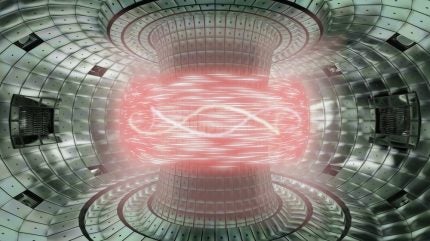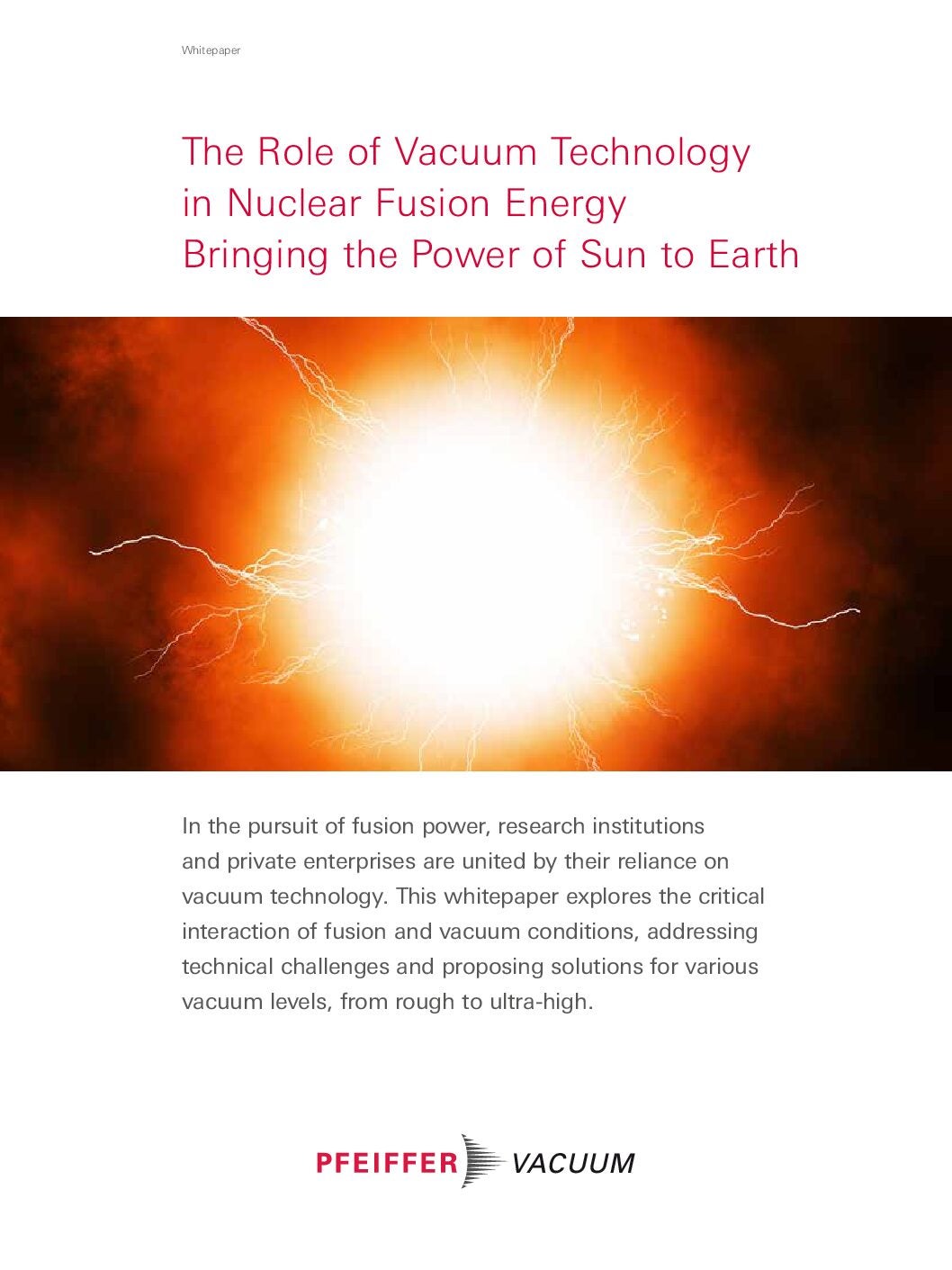
As the process that generates energy in the core of main-sequence stars such as our Sun, nuclear fusion is certainly nothing new. But, despite eight decades of research efforts to harness this powerful process, a controlled and sustaining fusion reaction has never been achieved on Earth. Nevertheless, many determined scientists believe the possibility of uniting two light atomic nuclei is one of the most promising ways of producing mass amounts of clean, renewable energy.
So, could nuclear fusion be the answer to the world’s need for zero-carbon energy? Both private companies and major government-funded projects are racing to be the first to provide an affirmative answer to that question. While they are all striving for commercially viable fusion-power production, there are a lot of unknowns surrounding best practice.
Two main reactor types currently exist: tokamak and stellarator. While the chamber geometries differ, both work with large, doughnut-shaped magnetic coils to direct plasma (in this case, a fully ionized gas mixture of two hydrogen isotopes – deuterium and tritium) away from the chamber walls. When the plasma is ignited, fusion can occur.
Selected for the ITER megaproject, the tokamak design is the more mature of the two technologies as, according to Andreas Schopphoff, head of market segment R&D at Pfeiffer Vacuum, scientists are much further along in understanding how the tokamak works and the plasma behaves. They also have a stronger idea of the best practice for process design, including the all-important vacuum system.
The star of fusion
“As a central requirement to do nuclear fusion you need to have purity in the gas mixture, and this purity can only be reached within a vacuum,” explains Martin Fischer, Market Manager Industrial Vacuum at Pfeiffer Vacuum. “There are also certain pressures required to ignite a plasma, which you can only reach under vacuum conditions.”
Besides the central ignition, a range of auxiliary devices used within the fusion setup also require vacuum. For example, thermal energy recovery systems in this application often use liquid lithium, which requires an extremely high cleanliness of the pipes in advance. The same holds true for the media pipes, which need to be evacuated before they are filled with deuterium and tritium.
“There are several aspects in fusion technology that have a strong correlation to the need for vacuum,” says Fischer. “If there is no vacuum technology, you cannot do fusion on Earth.”
“It works on the sun pretty well!” jokes Schopphoff. “What we’re trying to do is rebuild it here on Earth, so we need to have similar conditions that surround the sun.”
Light gases and back-streaming
Since the move away from gas-type independent pumping systems like Rotary Vane pumps, which use oil as a sealing medium, towards gas-type sensitive dry pumps, the problem of oil contamination within the vacuum has been replaced by a new challenge: light gases.
Under the dry pumping principle, a small gap is required between the rotor and stator to prevent friction and pump damage. This becomes an issue when evacuating light gases – not because of the size of the molecules, but because of their gas-dynamic properties, says Fischer.
“Light molecules, like helium and hydrogen, are much faster than others at the same temperature. This is why you can get stronger back-streaming. You want to move the gas one way, but the gas is streaming back through the gap in the wrong direction,” he adds.
In high-vacuum applications that require turbopumps to reach a vacuum in the pressure range of 10-6 mbar, the challenge grows, says Fischer.
Exploring options and models
A range of different pump types are being used by research sites and private fusion companies. The size of the application is sometimes a deciding factor. Membrane pumps, for example, can be used in small applications with lower suction capacity needs, while scroll pumps might be a good option to explore for medium-sized reactors.
Pfeiffer Vacuum also has a large portfolio of ACP multistage Roots pumps, applicable in a range of situations, including when high cleanliness is required for recirculating gases in cryostat. Screw pumps are another option that the company offers, with highly configurable setups, depending on the gas mixture. Meanwhile, high-vacuum applications require turbopumps, which are available in a range of sizes from Pfeiffer Vacuum’s HiPace and ATH / ATP range.
Chambers with magnetic shielding, vacuum gauges for pressure measurements, leak-detection systems for protecting operators from radioactive gas leaks, and equipment for residual gas analysis are other essential components of a safe, effective and reproducible fusion process. It is rare to find a vacuum pump company that can offer all of these things under one roof, and Fischer believes this puts Pfeiffer Vacuum in a very unique situation.
Schopphoff agrees, adding that flexibility, a wide portfolio and the company’s ability to develop customised solutions in partnership with customers is Pfeiffer Vacuum’s main strength: “The end-solution is very much dedicated to the customer’s application because it is not always the same. We provide a very customised solution. We’re looking at different positions where the pumps or gauges are mounted. We are looking at different conditions in regards to magnetic field.”
“Our solutions are modular,” he adds. “The pump is pretty much the same, although we did come up with a patented version of how to shield turbopumps and multistage Roots pumps from whatever is needed, so I think we’re highly flexible.”
Pfeiffer Vacuum uses analytical, empirical and statistical models to simulate the complex geometries of a nuclear fusion system and to calculate the performance of its vacuums, including the impact of electromagnetic interference on turbopumps , backing pumps and control unit electronics.
According to Fischer, the more the team knows about the process setup and reactor geometry, the more accurate its calculations and simulations can be. The same level of detail is required when discussing vacuum technology options.
“When we start discussing a project with a customer, we do not discuss this pump or that pump. We talk about the application, the process, the pressure, the gas flow, the surroundings, the temperature and radiation conditions. After we have an understanding of the process and the vacuum they need, then we choose from our portfolio the best way to solve it.”
To learn more about nuclear fusion, please download the whitepaper below.



